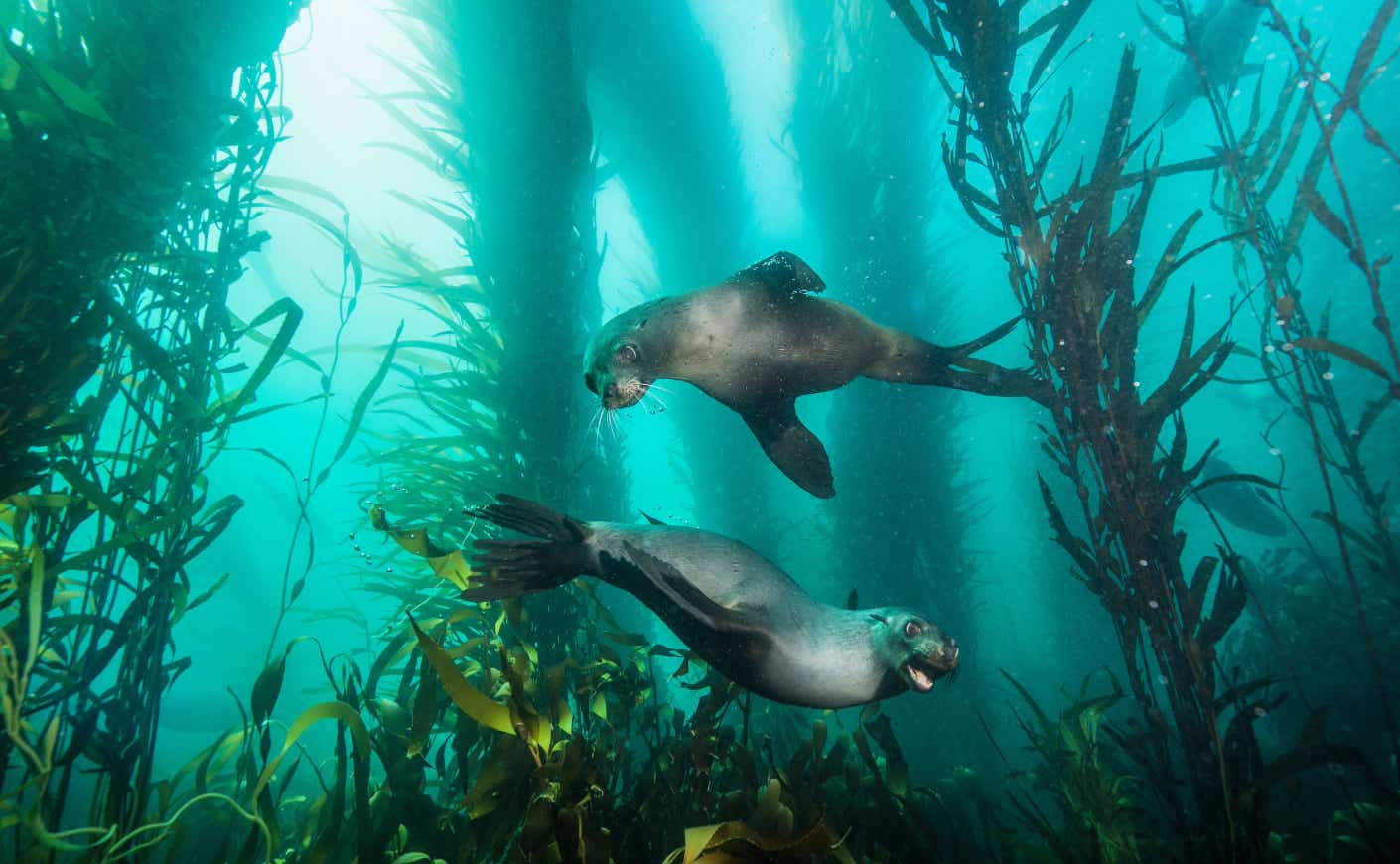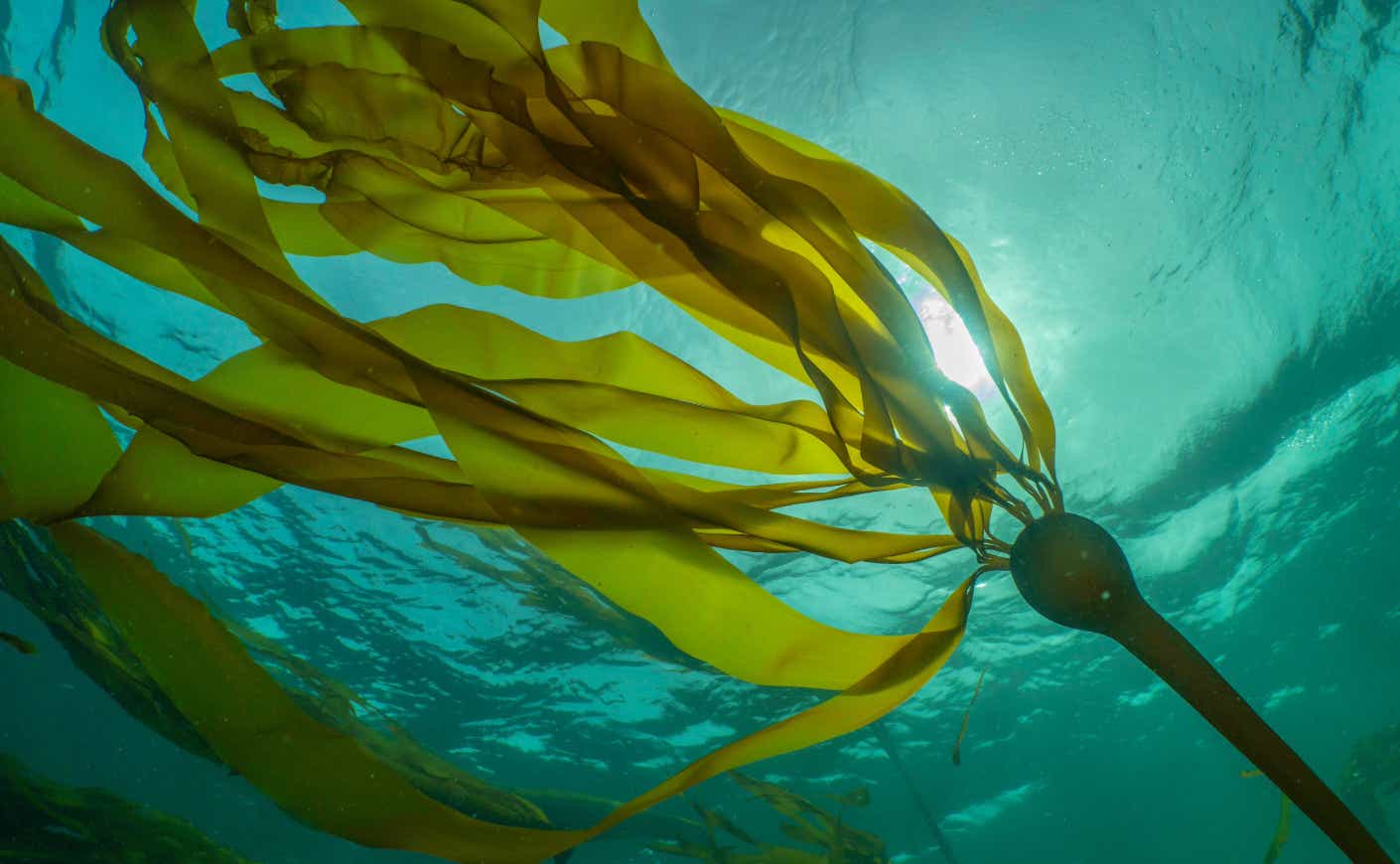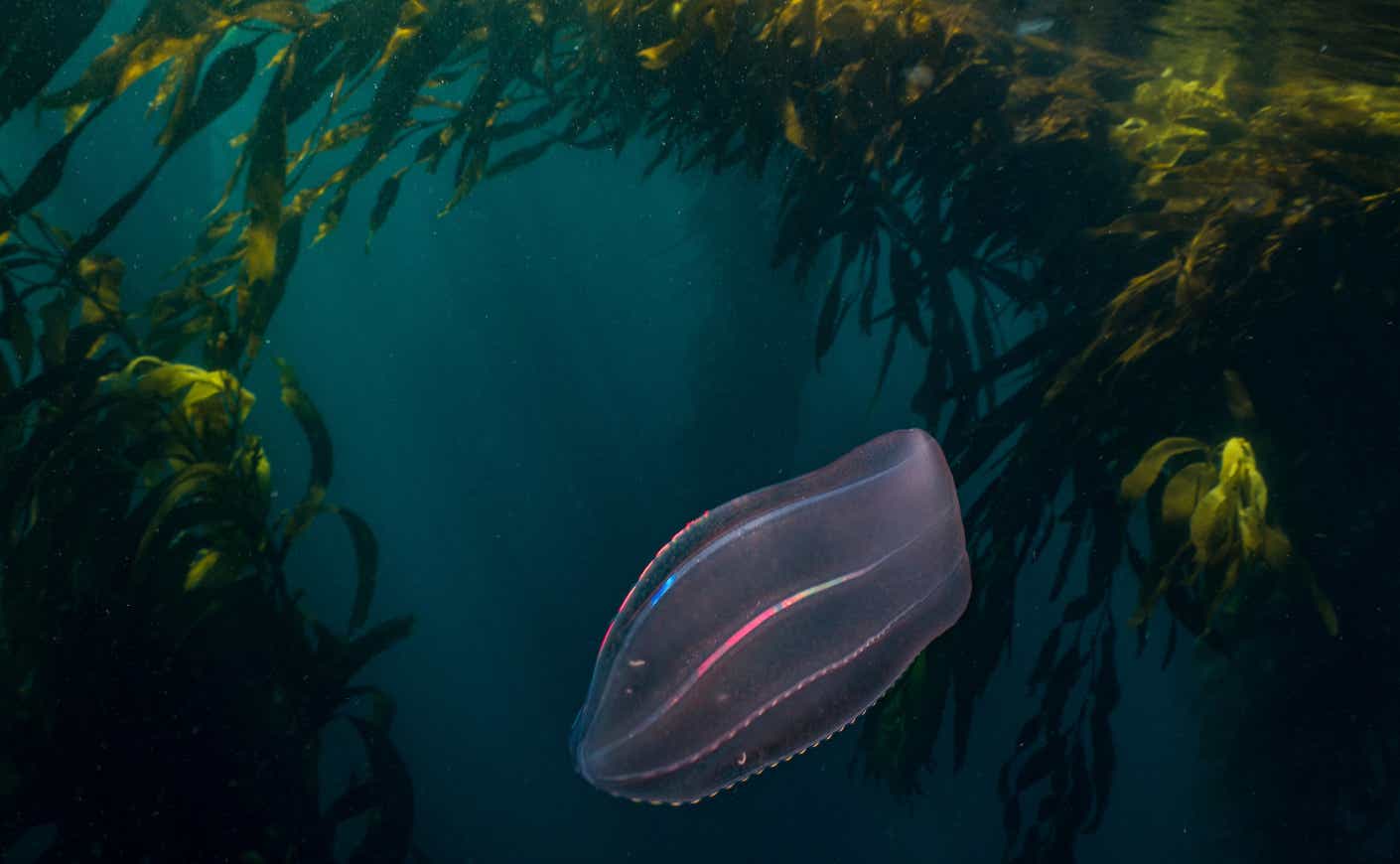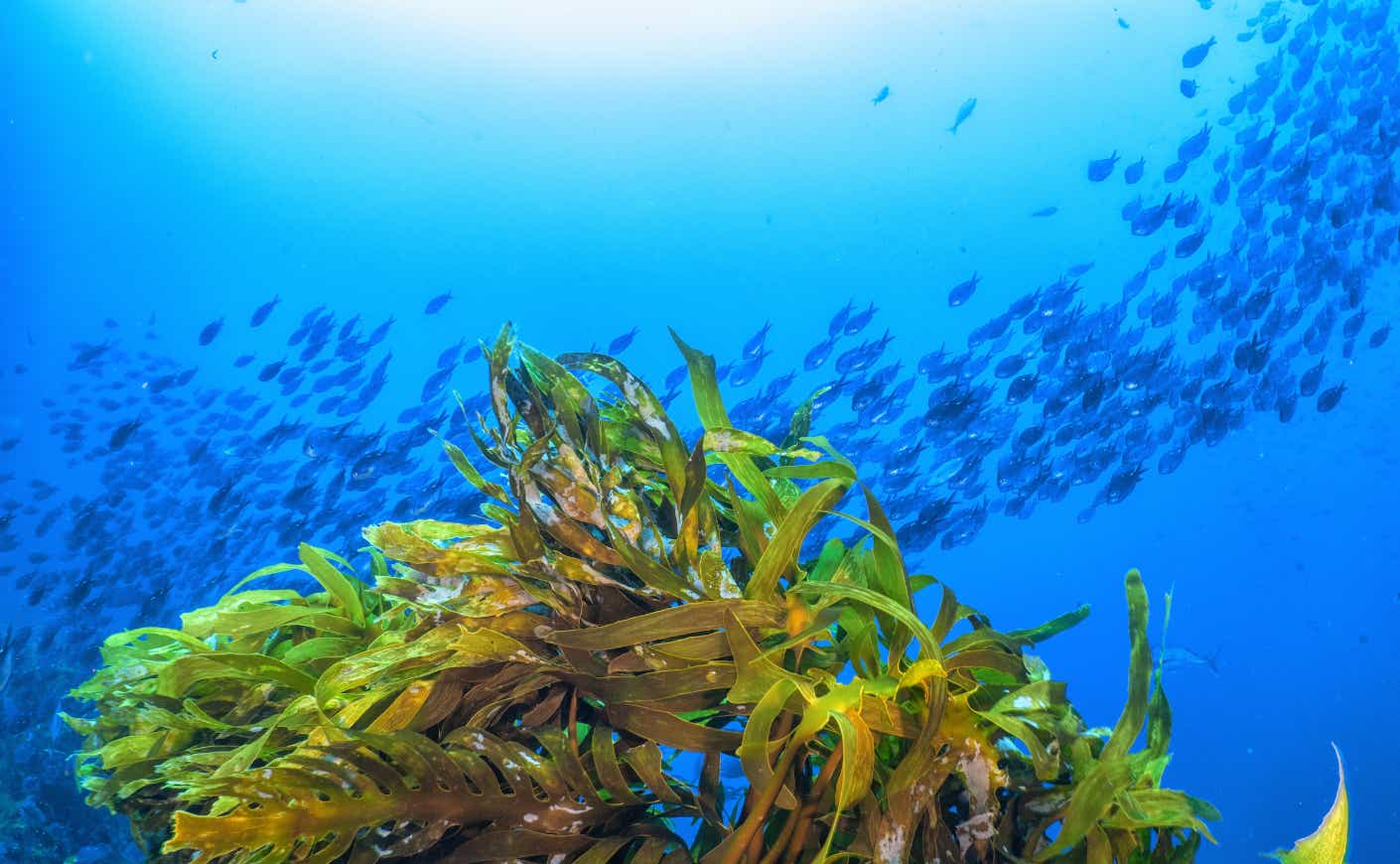Imagine you’re on vacation. You wake up and start your morning routine: splash water on your face, brush your teeth, slap on some moisturizer. You head out, grab a coffee in a compostable cup, eat some yogurt, and make your way down to the beach. As you wade into turquoise waters, something brushes your leg. You shriek, but quickly realize (to your relief) that it’s just seaweed.
You might think that was your first encounter with seaweed on this particular day, but you would be wrong.
Despite what you might think, this marine algae is not just something that gets stuck in your toes at the beach — it’s a real super-crop in a rapidly growing industry. Seaweed is hidden in so much of our everyday lives — the yogurt, the compostable cup, even the moisturizer and toothpaste. From skincare and food to bioplastics and fertilizers, seaweed is quietly everywhere. It’s one of the most versatile and underestimated resources on the planet. It’s sustainable, used in countless products, and vital for healthy oceans and coastal ecosystems. Now, thanks to new research, we know it can also help combat climate change.
We all know of seaweed. But what is it, exactly?

“Seaweed” is just the common term for marine macroalgae. Algae — in all its forms, from tiny drifting phytoplankton to giant underwater forests — gives us more than half the world’s oxygen. Unlike land plants, seaweed doesn’t have roots or stems. It absorbs everything it needs directly from the surrounding saltwater.
Seaweed farming has been around for centuries, and today, it’s gaining major momentum. Globally, the industry is valued at over $16 billion and is growing rapidly. It’s considered one of the most sustainable forms of agriculture — it doesn’t need fresh water, fertilizer, or land. While terrestrial farming drives about a third of global greenhouse gas emissions, seaweed farming emits almost none.
And this is only the beginning. Innovations around seaweed use are expanding at unprecedented rates. Seaweed could replace carbon-intensive products like petroleum-based plastics and synthetic fertilizers. Bioplastics made from seaweed are biodegradable and dramatically lower in emissions — a double win. Fertilizers derived from seaweed perform just as well as synthetic ones, while producing half the emissions. If just 3% of global farmland used seaweed-based fertilizer, we could avoid nearly 0.75 megatons of carbon emissions each year.
But the benefits go far beyond what we can make with it.

Seaweed is a critical ecosystem engineer, constantly working behind the scenes to keep our oceans healthy. It absorbs excess nitrogen and phosphorus from the water, preventing harmful algal blooms that create oxygen-starved “dead zones.“
Quick science detour: Wait, isn’t algae supposed to create oxygen?
Yes — but it’s complicated. Harmful algal blooms are typically caused by phytoplankton, microscopic algae that proliferate in large numbers when excessive nutrients are present in the water. They do create oxygen briefly while alive, but when they die and sink, their decomposition sucks oxygen out of the water. That’s what creates dead zones where few marine creatures can survive.
Seaweed, on the other hand, doesn’t trigger these harmful events. It actually cleans up those excess nutrients, improving water quality. It also stabilizes shorelines and provides food and shelter for countless marine species. It even shows promise in buffering ocean acidification.
And it’s not just functional — it’s beautiful.
If you grew up near the ocean, or even just visited, you probably have seaweed memories tangled up with your best beach days. How many of us once used bull kelp as jump ropes or whips, popped the little seaweed bubbles underfoot with a satisfying snap, and built sand castles with seaweed banners streaming from the towers? Seaweed was part of the magic.
Underwater, the enchantment only deepens. In places like the Pacific Northwest, kelp forests tower above the rocky seafloor. Sunlight filters through their golden canopies as fish weave in and out of the swaying fronds. Swimming through a kelp forest feels like entering a fantasy world.

And now, there’s compelling new science to support seaweed’s role in the fight against climate change.
A study just published in Nature, led by Alexandra Cousteau, Carlos Duarte, and the Oceans 2050 team as part of the Global Seaweed Project, found that seaweed farms can match the blue carbon potential of ecosystems like salt marshes, seagrasses, and mangroves. These marine ecosystems are known for drawing vast amounts of carbon dioxide out of the atmosphere and locking it away in ocean sediments. Farmed seaweed is mostly harvested for use, but some of it inevitably breaks off and sinks to the seafloor, storing carbon in the sea floor for decades or even centuries.
This is huge. Seaweed isn’t just a useful ingredient; it’s part of the solution. It can restore marine biodiversity, clean our waters, and help us reach net-zero emissions.
Right now, some of the brightest minds in seaweed science, policy, and innovation are gathering at the 25th International Seaweed Symposium in Victoria, Canada. We’re there to learn from the best and will be reporting on where the future of seaweed is headed. Be sure to follow us on Instagram and sign up for our monthly newsletter to see what we learned!
Seaweed may not have the glamor of bustling coral reefs or awe-inspiring whales, but it’s just as important — and honestly, just as cool. It’s a natural resource, a climate solution, an economic opportunity, and a source of beauty and wonder all wrapped into one.
Here’s a parting thought: Before we showed up, seaweed had already been here for millions of years, quietly tending to the planet’s biochemistry and keeping the ocean and atmosphere in balance. It will still be here long after us, too.
Paul Nicklen and Cristina Mittermeier co-founded SeaLegacy in 2014. SeaLegacy’s mission is to inspire people to fall in love with the ocean, amplify a network of changemakers around the world, and catalyze hands-on diplomacy through hopeful, world-class visual storytelling. For more updates on their meaningful work, learn more about SeaLegacy, and subscribe to Ripple Effect, Katie Couric Media’s sustainability newsletter.









